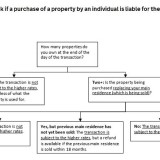Remortgage Conveyancing
Remortgaging is the process of ending one mortgage and replacing it with another one.
Do I need a conveyancer for a remortgage?
Yes – no matter what, some legal work is required when remortgaging.
If you’re remortgaging to get a better interest rate with a different lender, the conveyancing will likely be FREE! Most remortgages include a free legal package, but don’t expect a brilliant service, the banks/lenders tend to use cheap conveyancing firms.
If your changing names on the mortgage, this will require a transfer of equity. A common reason for this type of remortgage is a separation/divorce. For example, you might be taking take full ownership of a property after a divorce. This will require you to buy-out and remove your ex-partner from your property title and mortgage.
You’ll need a transfer of equity remortgage. With this kind of remortgage, additional legal work is involved. This won’t always be included as a free legal package from your lender. You’ll likely have to find your own conveyancer.
How much does remortgage conveyancing cost?
If you use a conveyancer, remortgage conveyancing usually costs £300-£400.
When do I pay?
You’ll usually have to pay upfront before any legal work begins. Because it’s separate from your property transaction, you can’t just add the fees to your mortgage.
How Long Does the Remortgage Processs Take?
Remortgaging doesn’t take long. The work is usually completed within a month, sometimes it’s all done in a matter of days. To speed things up make sure you have these checklist items ready:
- Valid ID
- Your current mortgage number
- Your new mortgage offer
If it’s a transfer of equity (divorce/separation):
- Valid ID
- Consent from all parties
- Mortgage lender consent
Do I have to pay Stamp Duty Land Tax on a Remortgage?
You don’t have to pay Stamp Duty Land Tax on Remortgages unless a transfer of ownership is involved. If you’re divorcing or separating from your partner and you’re transferring a proportion of your home’s value to them, there will be no Stamp Duty to pay on this.
The remortgage conveyancing process
Let’s quickly run through the remortgage conveyancing process. Once you’ve contacted your remortgage conveyancer, they’ll send you a welcome letter that outlines these steps in more detail and it will include some forms for you to fill in.
Step 1 – you fill forms and send ID
Before the conveyancer can begin working on your case, they’ll need these forms filled in and returned to them, included some proof of identification.
You will need to find your current mortgage account number. The conveyancers will need this to request your property title deeds.
Step 2 – conveyancer checks deeds
Even if you’re staying with the same mortgage lender, your conveyancer will need to request and check over the deeds from the current mortgage lender. They’ll also need to check the details of your property from the Land Registry.
Step 3 – property searches
Sometimes a mortgage lender will require property searches for a remortgage, but most of the time they accept indemnity insurance.
Step 4 – check the mortgage offer
The conveyancer will need to see your new mortgage offer, make sure you have this ready as this can delay the conveyancing process.
When your conveyancer receives your new mortgage offer, it is checked to make sure the amount you are borrowing is correct and all conditions are met.
Solicitors and conveyancers will make sure that you’re fully aware of the remortgage details. It’s an important contract, you’ll need to make sure that you know all the contract conditions, not just the interest rate and monthly payments.
Step 5 – you sign the mortgage deeds
Once your happy with the terms and conditions of your mortgage offer, it’s time to sign the mortgage deeds. This can be done in person or through the post.
Step 6 – set a completion date
Your conveyancer will set a completion date and request funds for completion.
They’ll also request a redemption statement for the old mortgage, this will be paid off at completion (the new mortgage will then replace the old one).
Step 7 – Completion day
On the completion day, your conveyancer will pay off the old mortgage with your new mortgage funds.
That’s it, you’re done! You’ve successfully remortgaged! But wait, there’s more…
Step 8 – Post completion
After you’ve completed, the conveyancer has a little more work to do. They’ll have to register the new mortgage at HM Land Registry, send title deeds to the new lender and send you any important documents/statements for you to keep safe.
Transfer of Equity Remortgage
If you’re remortgaging for a Transfer of Equity (likely because of a separation/divorce) it’s a bit different. First of all, if you’re staying with the same mortgage lender, you’ll need consent from the lender. If not, you’ll need a new mortgage offer (see step 1 above).
Once you have the lenders consent (or new mortgage offer) your solicitor will now write up a contract known as a Transfer Deed. This must be signed by all parties, including the mortgage lender, to make sure everyone involved agrees with the transfer of equity.
Once the Transfer Deed are signed and returned to the mortgage lender your conveyancer can complete the Transfer of Equity.
Summary
I hope you have found this guide helpful. Remortgage conveyancing isn’t that complicated, once you find the right conveyancer to do the work for you, they’ll help you through each step. If you have any questions, please leave them in the comments section below.







